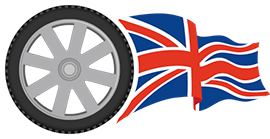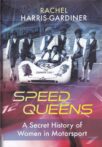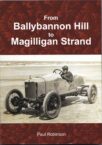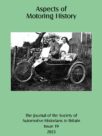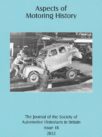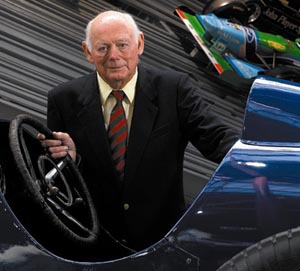
It is with sadness that we have to report the passing of SAHB Honorary Member, Lord Montagu of Beaulieu.
Lord Montagu was a very early member of the Society of Automobile Historians (SAH), joining in 1971, being member number 67. He was made an honorary member in 1997 having received the ‘Friend of Automotive History’ award from the SAH, and therefore an Honorary member of the SAHB.
Fellow SAHB member, Michael Ware who knew and worked with him for nearly four decades, has written the following appraisal:
With the passing of Edward Montagu, the world of heritage and historic vehicle preservation has lost a mighty champion. He was 88 and had been suffering indifferent health for some time. Problems with his legs had resulted him using a mobility vehicle for journeys around the grounds of Palace House and into the rally fields to view events such as the annual Auto jumbles. Latterly he had to use a wheel chair, but this did not stop him travelling to his London Flat each week and attending the House of Lords.
Lord Montagu’s father introduced the motor-car to Beaulieu. In the summer of 1898 he purchased a new 2 cylinder Daimler (which was crashed and turned over by his chauffeur). The following year he bought the first 4 cylinder Daimler to come out of the Coventry factory. As the Member of Parliament for the New Forest he would speak up for the motorist when most were taking the opposite view. He was a pioneer motorist with a number of firsts to his credit. He competed in the Daimler in the touring car class of the Paris Ostend race of 1899 where he finished third in his class. It was a gentleman’s sport in those day, he took his chauffer Teddy Stevens as his mechanic! Later Lord Montagu’s father became a Director of the Brooklands race track. Neither Lord Montagu nor I have been able to find any reference to Lord Montagu’s father having any keen interest in Museum’s as such. He obvious had an interest in early vehicle preservation as he donated his 1899 4 cylinder Daimler to the Science Museum and an early horse drawn fire engine from the Beaulieu estate to the go-ahead industrial museum in Kingston Upon Hull, where it still resides. Lord Edward Montagu never actually answered my question to him “Is your interest in all motoring matters inherited from your father, or self-inflicted?”
Lord Montagu’s father died in 1929 when Edward Montagu was just three. His early years were spent on the Beaulieu estate, for part of the war he was evacuated to Canada, before attending Eton. He did his National Service in the Grenadier Guards, some of it in Palestine. On returning to Civvy Street, against some family advice he joined the top London public relations and advertising firm Colman, Prentice and Varley (CPV). One of his first jobs was to help launch ‘The Eagle’ comic. He later became an Account Executive, a grounding which was to influence so many of the decisions taken at Beaulieu in the years to come. In 1951 at the age of 25 he inherited the 10,000 acre Beaulieu estate. He returned to Beaulieu to an estate which had been underfunded since the death of his father.
In order to increase the estates income he decided to open Palace House to the public. The remains of Beaulieu Abbey which had been part restored by his Grandfather was attracting some 30,000 visitors a year so he had a basis on which to build. The house opened on 8th April 1952. Right up until the last minute Lord Montagu kept the secret that the front hall of Palace House was devoted to his father’s memory and included 6 old cars as part of the display. I have seen a memo dated a few months before the opening which talks of “my motor museum”. 1952 was just a taster for what was to come. Many people have expressed the view that it was the opening of Palace House with its old cars (soon to be known as the Montagu Motor Museum) and the film Genevieve a year or so later, which lit the touch paper for the explosion of interest in preserving our motoring heritage.
Soon with Lord Montagu’s enthusiasm Beaulieu had the world’s first motorcycle museum (the first Curator of which was Graham Walker, father of commentator Murray Walker) The collection of cars expanded into buildings in the ground and in 1959 Lord Brabazon of Tara with Stirling Moss opened a new building in which the Montagu Motor Museum was housed. By the mid-1960s over half a million visitors a year were coming to Palace House and the Museum. The museum was full to overflowing with exhibits and on most summer day’s visitors as well. Plans were drawn up for a complete rethink in the way in which the visitors were handled and this included a new Leonard Menassah and Partners designed motor museum building. I am told that when Lord Montagu and his advisors sat down to decide whether or not to go ahead with the museum all the advisors were against the project, but Lord Montagu overruled them knowing that he could make it work. A charitable Trust was set up to raise money to build and run what was to become the National Motor Museum. The Museum building was opened by HRH the Duke of Kent on the 4th July 1972. Throughout the formative years of this new museum Lord Montagu very successfully led the fund raising team. He had been chairman of the Trustees of the National Motor Museum Trust from its earliest beginnings until quite recently. His interest in the museum’s collection of cars (of which only a third were his) has never flagged. He was instrumental in setting up in 1960 the now famous Motoring Reference Library at the Museum, followed two years later by a photographic library (now the Motoring Picture Library) and later the Film and Video Archive.
Lord Montagu’s father owned and edited the magazine Car Illustrated from 1903 until 1914. His son took over the ailing Vintage and Thoroughbred Car magazine in 1956, renamed it Veteran and Vintage Magazine and edited it until it was sold in 1979. He was the author of a number of motoring books (many diligently researched by the late Michael Sedgwick a former Curator of the Museum) these included Rolls of Rolls-Royce, Lost Causes of Motoring (Britain and Europe) Jaguar a biography, The Gordon Bennet races, all of these with ones by other authors were published by Cassells as the Montagu Motor Book series. He co-wrote a number of other titles with some of Britain’s top motoring historians.
He was President of the Federation of British Historic Vehicle Clubs (and the Historic Vehicle Clubs Joint Committee before that). He worked tirelessly for that organisation making many journeys into Europe for meetings with FIVA and European Parliament. He was very active member of the House of Lords often speaking or asking questions in relation to the heritage and historic vehicle matters. He did a great deal of work behind the political scene to make sure that there was freedom to use old vehicles on the roads. He was responsible for making sure that the historic vehicle was excluded from capital gains tax and when a tax on possession of a motor was being widely talked about he took the then Minister of Transport on the Brighton Run and lobbied hard for exemption for the older vehicle. Lord Montagu was very keen on old car rallying both at home but more particularly abroad. He took part in the London to Brighton Veteran Car Run almost every year until well into his 80s and went as a passenger until recently.
Lord Montagu also had a high profile in the wider world of the heritage. Palace House Beaulieu became one of the most visited Stately Homes. In the early years there was great rivalry between Lord Bath of Longleat, The Duke of Bedford, from Woburn and Lord Montagu. It made great media copy, though Lord Montagu would have preferred it if the Duke of Bedford did not refer to the Museum as his “garage”.
Lord Montagu was involved in founding the Historic Houses Association and became its President. Later he became President of the Museum Association of Great Britain, in the writers opinion perhaps his greatest achievement, he was probably the first non-professional to hold that position. It was a shame in one way that part way through his term he was offered the chance to be Chairman of the Historic Buildings and Monuments Commission, which he quickly renamed as English Heritage. This too was a great achievement. He certainly went a long way to overhauling this organisation, but even Lord Montagu with all his skills could not solve the problem of how Stonehenge could best be re-presented in a modern way to the thousands of visitors that flocked there every year. . He lived to see this finally happen many years later.
He was a great lover of opera, jazz and the theatre. He had many friends in the Showbiz world many of whom came to visit at Beaulieu. In 2000 he published his autobiography “Wheels Within Wheels – an unconventional life”. This included a very frank account of those matters I am sure the general press will pick up on in their obituaries. My disappointment with this autobiography is I felt he played down his part in the success of the Montagu and National Motor Museums at Beaulieu and the work he had done for the old vehicle movement. Working for Lord Montagu for 38 years I had many opportunities to see just how much time he spent working for the old vehicle movement. We extend our sympathies to Belinda Lady Montagu and Lady Fiona Montagu, his son Ralph, who inherits the title, to Mary and Jonathan.
